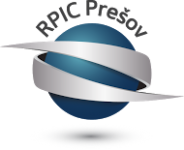Summary:
A German university offers a solution for standardised quantitative diagnosis of sleep bruxism. It is user-friendly and the first bite film was validated in clinical studies. The device is worn by the patient like a night splint and combined with an automated evaluation software. This facilitates monitoring of bruxism activity and personalised therapy planning. Partners are sought for license agreements.
Description:
Outside the scientific setting of a sleep laboratory, diagnosis of sleep bruxism mainly relies on examination for clinical evidence – e.g. indicated by the tips of the teeth appearing flat – and on standardized questionnaires. To date there is a lack of a user-friendly and validated devices for standardized, quantitative diagnosis available. As a result, bruxers are often diagnosed at late stage, when severe consequences of teeth grinding, such as abraded teeth, facial pain, headache and damage to the temporomandibular joints are apparent. As simple management of buxism such as mouthguards/splints is available to prevent damage, early diagnosis, treatment and follow-up are clearly needed.
A German university developed a solution based on a device that is worn by the patient like a night splint. This device is based on a hard plate, which is covered by five specifically linked layers with different colours and defined abrasion properties. A fully automated evaluation software is provided for standardized, objective, quantitative analysis.
Thus the solution offered not only allows early diagnosis of bruxism, but also facilitates monitoring of bruxism activity. It renders personalized therapy planning possible and as a result cost-intensive treatments can be scheduled more accurately.
The device is easy to apply. Patient compliance is high as irritation by the thin device does not occur. Production of the device is based on established processes and the related production costs are within economic feasibility.
The university is looking for industrial partners with applications in dental technology who are interested in bringing the invention to the market. License agreements are offered.
Type (e.g. company, R&D institution…), field of industry and Role of Partner Sought:
The university offers access to rights for commercial use via a license agreement to industrial partners active in dental technology and interested in implementing the solution.
Stage of Development:
Prototype available for demonstration
Comments Regarding Stage of Development:
System prototype demonstration in operational environment.
Technology Readiness Level (TRL) 9
IPR Status:
Patents granted
Comments Regarding IPR Status:
Patent granted in Europe
External code:
TODE20211027001








